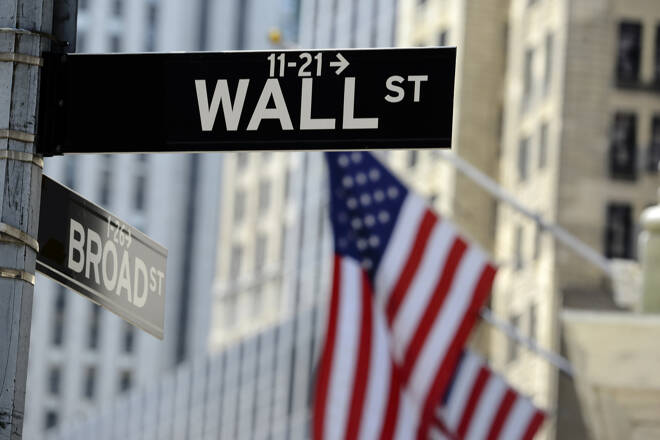Advertisement
Advertisement
NASDAQ 100, Dow Jones, S&P 500: Pre-Market Weakness on Monday Amid Debt Ceiling Uncertainty
By:
U.S. stock futures show slight decline as debt ceiling worries, Federal Reserve Chairman's remarks unsettle investors.
Highlights
- U.S. stock futures decline due to debt ceiling talks
- Positive economic data and earnings support market gains
- Investors closely monitor debt ceiling negotiations for potential risks
Overview
In premarket trade on Monday, U.S. stock futures showed a slight decline as investors closely monitored the ongoing talks concerning the U.S. debt ceiling.
The Dow Jones Industrial Average futures dropped by 0.1%, the S&P 500 Index futures were lower by 0.2%, and the Nasdaq 100 futures contract decreased by 0.1%. The postponement of negotiations on raising the debt ceiling had led to lower stock market closes and a weakened dollar, leaving market participants unsettled.
Despite the uncertainty in Washington, the major U.S. stock indexes recorded gains last week. The Nasdaq Composite climbed by 3.04%, the S&P 500 gained 1.65%, and the Dow increased by 0.38%.
Economic Data Boosts Earnings, Turbulence
Positive economic data and better-than-expected earnings were the key factors contributing to the overall performance. However, news of an impasse in the debt ceiling negotiations caused turbulence in the market. Investors paid close attention to Federal Reserve Chairman Jerome Powell’s remarks for insights into the upcoming interest rate decision.
Debt Ceiling Standoff Raises Investor Concerns
Investors are closely monitoring the debt ceiling issue and hope for a resolution without extreme actions. They liken the situation to a tense standoff. Powell highlighted uncertainties from past rate hikes and credit tightening, casting doubt on the need for further monetary tightening. The regional bank crisis is under evaluation for its potential impact on lending and future rate decisions by the Fed.
Yellen Warns of Debt Default
Yellen voiced worries of a possible debt default by June 1. She also discussed the option of bank mergers to tackle the liquidity crisis. These statements further contributed to market volatility.
Market Climbs Despite Debt Threat, Tech Stocks Lead
Despite the looming possibility of a debt default and persistent inflation, the market has been steadily climbing, with tech stocks leading the way. Bank of America strategist Savita Subramanian raised her year-end target for the S&P 500, indicating confidence in more stable earnings and suggesting that stock prices are not overvalued.
While valuations are not currently low, it is typical for them to be higher during profitable periods. Looking at cyclically adjusted earnings, valuations suggest an expected annual return of 5% for the S&P 500 over the next ten years. This indicates a short-term bullish outlook.
Notable Earnings Reports, Economic Data Awaited
Notable reports to watch as first-quarter earnings season ends: Zoom Video’s report on Monday, followed by Lowe’s and Dick’s Sporting Goods on Tuesday. Light economic data release this week: second reading for first-quarter GDP on Thursday and personal consumption expenditures inflation gauge on Friday. Federal Reserve meeting minutes on Wednesday may provide insights on interest rate hikes. Traders will be focused on JPMorgan Chase’s investor day on Monday.
Resilient Market Defies Uncertainties
In conclusion, although U.S. stock futures experienced a slight decline amid the debt ceiling talks, the market has shown resilience and recorded gains despite the uncertainties. The short-term outlook remains bullish, supported by positive economic data, better-than-expected earnings, and the belief that stock prices are not overvalued. However, the ongoing debt ceiling negotiations and potential default pose risks that investors continue to monitor closely.
For a look at all of today’s economic events, check out our economic calendar.
About the Author
James Hyerczykauthor
James Hyerczyk is a U.S. based seasoned technical analyst and educator with over 40 years of experience in market analysis and trading, specializing in chart patterns and price movement. He is the author of two books on technical analysis and has a background in both futures and stock markets.
Did you find this article useful?
Latest news and analysis
Advertisement
